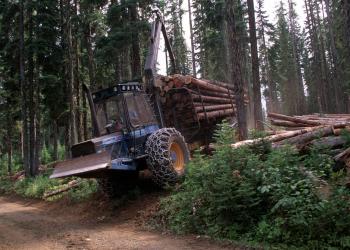Natural Resources
The health of our nation depends, in many ways, on the vitality of our nation’s forests and grasslands. The Forest Service manages these important areas for the benefits and uses that contribute to local communities and the health of sustained ecosystems and resources over time.
Natural resources benefit communities by:
- Creating jobs and revenue in industries that rely on natural resources management, including logging, forest restoration, recreation, tourism, and ranching.
- Improving forest health by reducing hazardous fuels, enhancing clean water, and restoring habitat for plants and animals.
- Enhancing public safety by lowering wildfire risks and improving access.
- Boosting tourism and recreation by maintaining healthy, accessible National Forests.
- Providing the public with sustained important products such as wood, food, Christmas trees and more
Pacific Northwest Timber Program

Sustaining Forests, Supporting Communities
Contributing to local economies and managing forest health for multiple-use benefits.
Forest Management

Managing the resources of our forests and grasslands for sustainable multiple-use.
Rangeland and Grazing

Rangelands provide a large quantity of forage for both domestic and native animals and provide many benefits to the public.
Partnerships
EcoShare

Ecoshare provides a wide range of information on the natural resources of Oregon and Washington.



